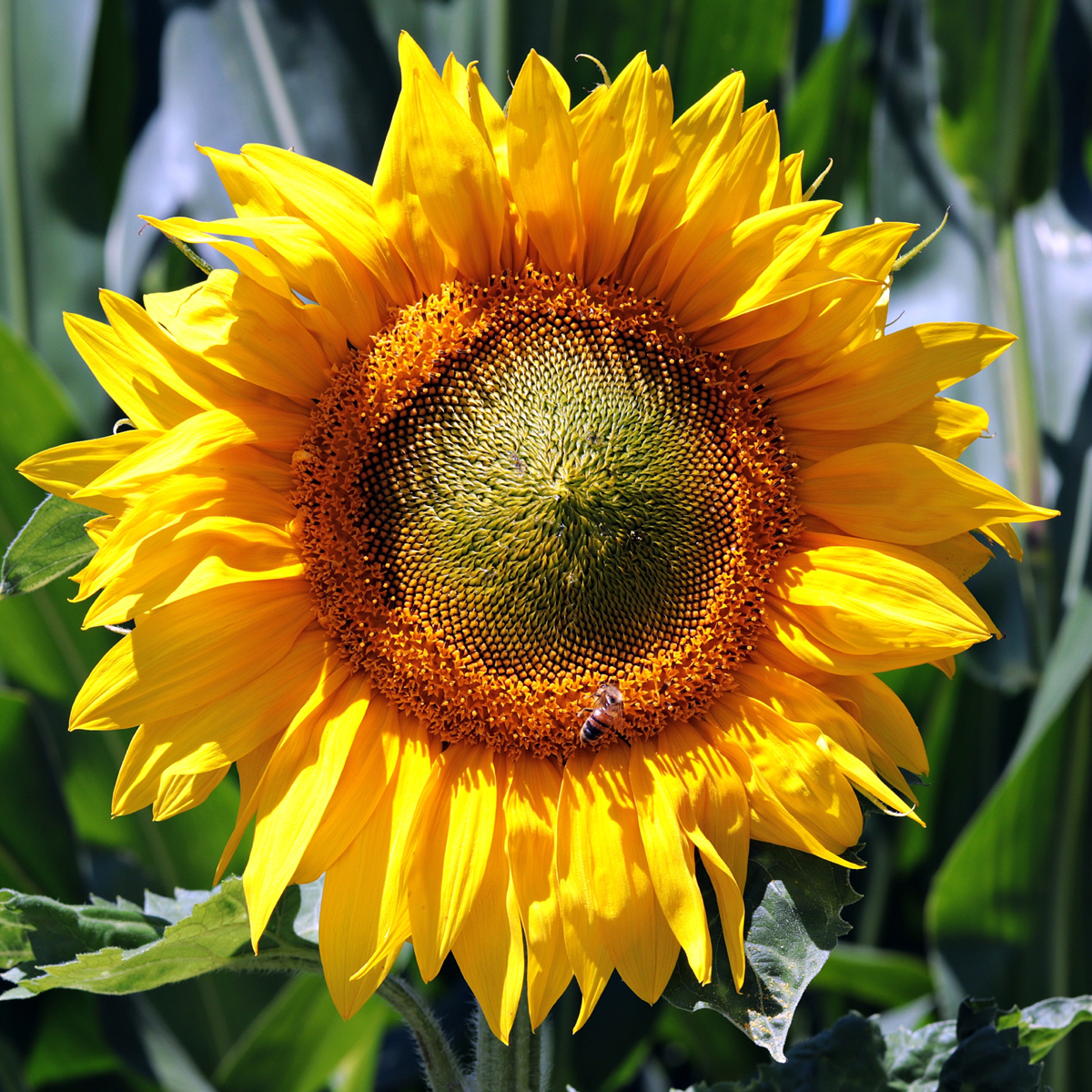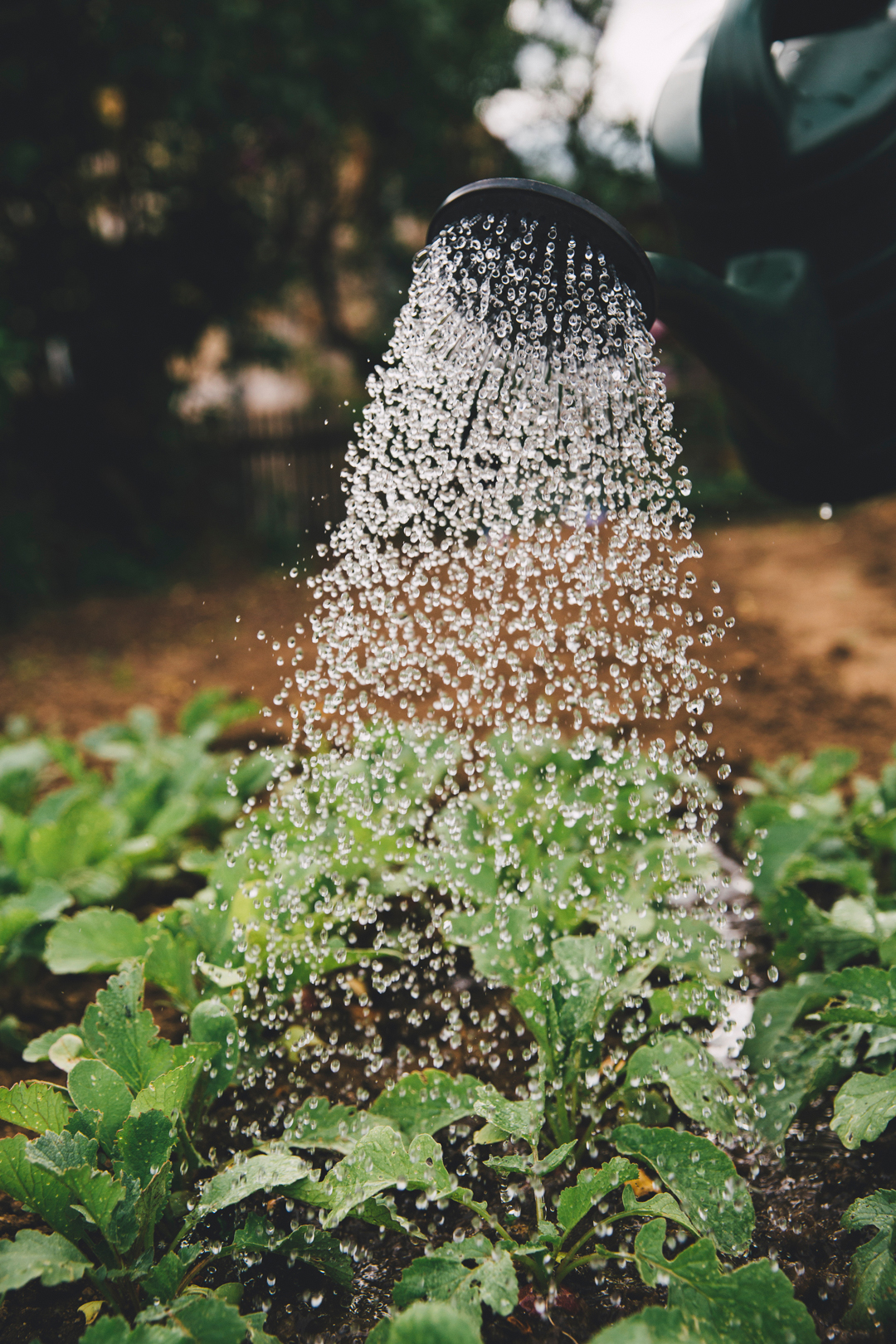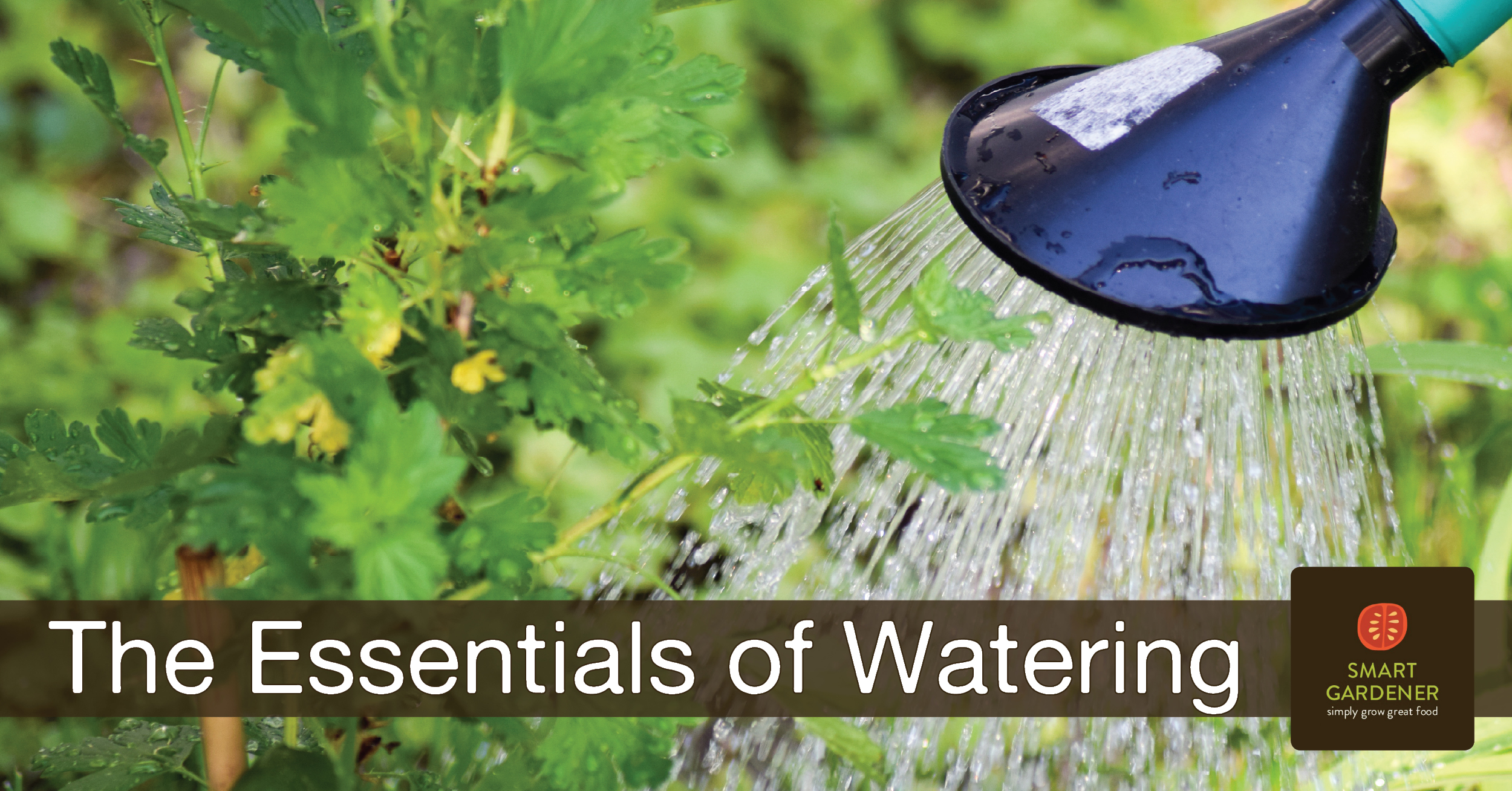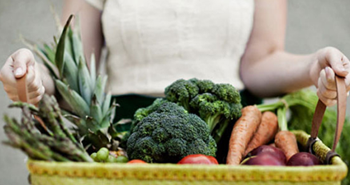Summer has arrived in California with record high temps, and in my garden we have already passed the point where the vegetables can get enough moisture from the soil. Until the rains start again in late October it is up to me to supply enough water to keep them alive. This is the most important summer gardening activity and if it isn’t done properly there really won’t be much of a vegetable garden to bother with.
Your climate may differ from mine, but the essentials of watering are the same everywhere. These are four things to keep in mind to make sure your garden thrives all summer long:
 Watch your plants
Watch your plants
If you know what to look for it is easy to tell when plants are suffering from lack of water. The first sign is that they lose the sheen on their leaves and start to sag slightly instead of standing rigidly upright. It is important to water immediately when you see this happening, as further stress will slow their growth.
More extreme signs of water stress include curling leaves, floppy growing tips, and dying leaves. All of these are signs the plant is severely distressed and has basically stopped growing, and is struggling to stay alive.
Simple wilting of leaves isn’t always a sign of stress however. Many plants (especially those with large leaves such as squash and cucumber) do it intentionally in hot sunny weather as a means of reducing water loss. They recover quickly when the temperature drops though, whereas water stressed plants recover more slowly. This is why you should check plants for water stress in the cool of early morning or evening and not in the midday heat.
Sunflowers are particularly prone to water stress. Because they wilt before almost anything else, they can be used as a living indicator of when the soil is starting to get dry before your other plants begin to suffer. Simply plant a few sunflowers in your garden bed and when they show signs of wilting, it is time to water the entire bed.
 How much to water
How much to water
The general rule of watering says to give your plants 1″ of water per week in summer and about ½” in spring and fall. An inch of water means ⅔ gallon per square foot, or 66 gallons per 100 square feet, which should be enough water to penetrate 6″ to 12″ into the ground.
Though 1″ per week is a reasonable average to start with, it is only a guideline and will need to be adjusted to account for temperature, humidity, soil type, crop, and other factors.
It is better to look at the plants themselves and the soil they’re growing in to determine if you are watering enough, and then adjust accordingly. After watering, the soil should be evenly moist all the way down.
One of the most common mistakes beginner gardeners make is to water only until the surface of the soil looks wet and then move on. Appearances can be deceiving. While the top of the ground looks wet, an inch or so down the soil may still be completely dry. If your plants are wilting again within 24 hours you didn’t give them enough water.
Time of day to water
In hot weather you should avoid watering in the middle of the day, because any water that lands on the leaves, or that stays on the soil surface, will quickly evaporate and be wasted. It’s best to water either in the morning before the sun it too high, or early enough in the evening so that any wet leaves can dry out before nightfall.
How to apply water
Water should only be applied as fast as it can soak in. If you apply water faster than this it will puddle and the surface structure may break down. Excess water may also run off of the bed and be wasted, taking valuable soil with it.
The method you use to apply the water depends on your garden set up. Whether you choose to set up an irrigation system (soaker hose or drip irrigation), or if you prefer to hand water or use an overhead sprinkler system, it is important to keep in mind the water needs of the different plants in your garden, your climate and soil type, and what you find to work best for you.
Fortunately, all of that information is easy to find in the Crop Care tab in the Plant Guide for each plant in your garden plan. Smart Gardener makes it easy to keep track of each step of planning, growing, and harvesting your own food.
Two more things: compost and mulch!
To help conserve all that precious water you just put into the garden, it’s important make sure your soil is full of water-holding compost, and to cover it with a layer of mulch.



Leave a Reply